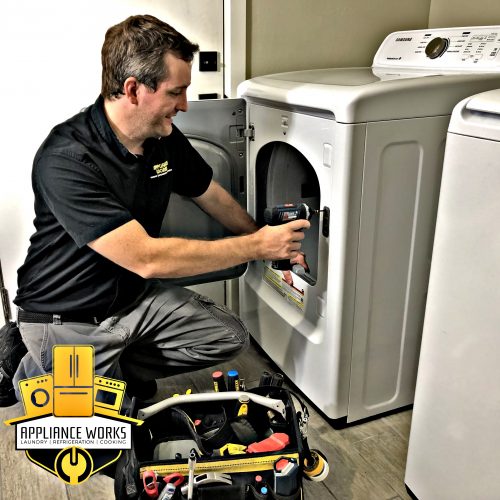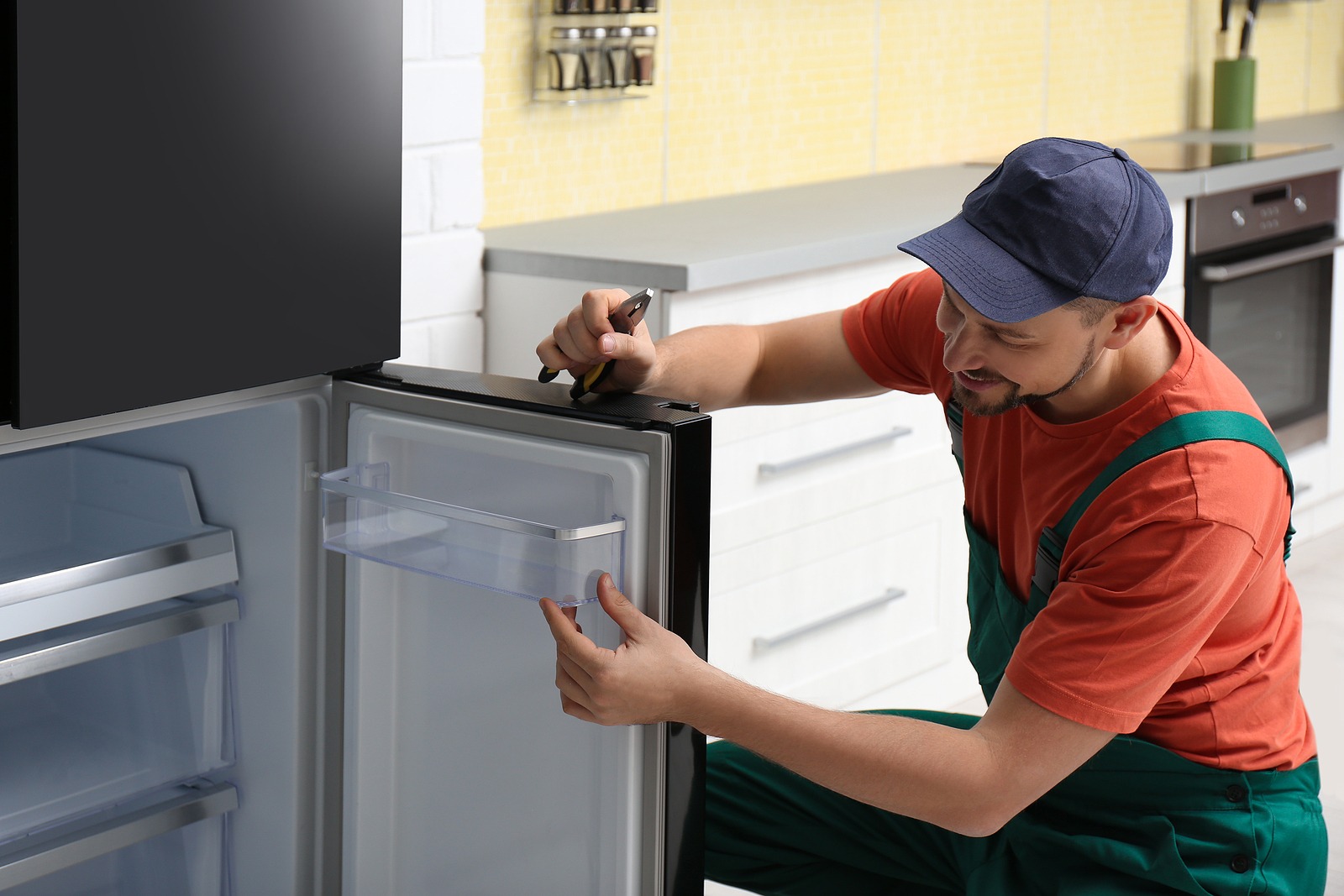The Ultimate Guide to DIY Appliance Repair Work Methods
From refrigerators to dishwashers, comprehending just how to fix and fix these devices can conserve you time and cash. Are you all set to uncover necessary strategies that will encourage you to handle repairs confidently?
Recognizing Usual Appliance Problems
When you rely on your home appliances, it can be discouraging when they instantly quit working or act up. Comprehending usual home appliance troubles can assist you troubleshoot issues successfully.
If your oven isn't heating, defective components or thermostat problems might be to blame,. Dishwashing machines typically experience troubles with drainage, so ensure the filter is tidy and the drain tube isn't kinked.
Also, listen for uncommon audios; they commonly indicate mechanical concerns. By recognizing these indications, you can conserve time and potentially prevent pricey repairs. A little understanding goes a lengthy means in keeping your devices, so stay notified to maintain whatever running smoothly.
Vital Devices for Do It Yourself Repair Works
Before diving right into DIY home appliance fixings, it is necessary to collect the right tools to assure the process goes smoothly. Begin with an excellent collection of screwdrivers, consisting of both flathead and Phillips, as they're vital for opening most appliances. You'll likewise want a set of pliers for clutching and turning wires or little elements.
Don't fail to remember a multimeter; it helps you examination electric elements and identify issues effectively. A socket collection is handy for loosening up or tightening screws, while an utility blade can be helpful for cutting cables or opening up packaging.
Finally, consider having a flashlight available to brighten dark areas inside your appliances. With these essential devices, you'll be well-equipped to tackle numerous fixings, conserving both money and time. So, gather your gear and obtain prepared to roll up your sleeves!
Safety First: Preventative Measures to Take
Before you begin any kind of device repair work, it's necessary to focus on safety and security. Make certain you use personal protective devices, separate the source of power, and maintain your workplace organized. These easy preventative measures can assist prevent mishaps and assure a smoother repair service procedure.

Personal Safety Equipment
Safety and security gear is a vital component of any type of DIY home appliance repair service task. You ought to constantly put on safety and security goggles to shield your eyes from dust and particles. A durable set of gloves will certainly protect your hands from sharp sides and unsafe products. Consider using a mask if you're managing chemicals or dirt, ensuring you take a breath securely while functioning. Steel-toed boots are also a smart selection, especially when lifting hefty home appliances. Don't neglect to use lengthy sleeves and trousers to shield your skin from prospective injuries. By focusing on personal protective equipment, you'll substantially minimize the danger of injuries and crashes. Keep in mind, being prepared with the appropriate gear keeps you risk-free and focused on finishing your repair service efficiently.
Power Source Interference
To ensure a secure DIY appliance repair service, separating the power resource is vital. This simple action protects against electric shocks and guarantees that you can focus on the fixing without stressing about unintended activation. When you're positive that the power is separated, you can confidently proceed with your repair work, knowing you've taken the necessary precautions to secure on your own.
Job Location Organization
A well-organized workspace can make all the difference in your do it yourself home appliance repair task. Begin by clearing your office of mess to stop diversions and accidents. Set out all your devices and products, organizing similar products with each other for simple accessibility. Make use of a toolbox or coordinator to maintain small components like screws and washing machines contained and classified. Ensure you've obtained ample lighting; it'll assist you see information clearly and reduce the threat of errors. Do not forget to keep security gear like handwear covers and goggles within reach. Have a trash bag handy to dispose of waste immediately. A neat room not just boosts performance yet likewise keeps you safe while you service your home appliance repair work.
Step-by-Step Guide for Refrigerator Repairs
When your refrigerator starts acting up, it can be aggravating, however tackling the trouble yourself can save you time and money. have a peek at this website Examine for usual issues like temperature level fluctuations or uncommon sounds. For a loud refrigerator, examine the fan and validate it's not blocked.
If there's water pooling within, check the door seals for damages or dust, and clean them if essential. For ice accumulation, clear the defrost drainpipe. When you have actually addressed the issue, connect the fridge back in and check it for a few hours. If the issue lingers, you may need to change a damaged component, like the compressor or follower motor. Remember, don't hesitate to consult the handbook or look for expert help if required.
Taking Care Of Cleaning Maker Problems
Just like fridges, cleaning devices can offer their own collection of obstacles, however several problems can be settled with a little troubleshooting. First, if your device will not start, inspect the power cord and verify it's connected in. Next off, examine the door lock; a defective lock can prevent the cycle from beginning. It could be due to foreign items stuck in the drum or the drain pump. if you discover uncommon noises during procedure.
If your clothing aren't getting tidy, think about the water degree and detergent type; making use of excessive detergent can develop excess suds, affecting performance. For leaks, examine the hoses for fractures or loose connections. Tightening these can often address the trouble. Normal maintenance, like cleaning the filter, can prevent numerous issues from occurring. Bear in mind, a little troubleshooting goes a long means in maintaining your washing machine running efficiently.
Troubleshooting Cooktops and stoves
How can you troubleshoot typical issues with your stove or cooktop? Start by inspecting the power supply. Ensure it's plugged in and the circuit breaker is not tripped. Confirm the gas shutoff is open if it's a gas cooktop. Next, test the heaters: if they do not ignite, clean the igniter and check for blockages in the heater ports.
If your oven isn't heating, examine the temperature level settings and validate the door seals securely. A faulty home heating component can likewise be the wrongdoer; you may need to change it if it's harmed.
For uneven cooking, revolve your pans and take into consideration using an oven thermometer to validate accurate temperatures. Lastly, if you hear uncommon sounds or scent gas, shut off the home appliance right away and seek advice from a specialist. By adhering to these steps, you can identify and settle several common stove and range concerns effectively.
Fixing Dishwashing Machines Facilitated
When your read what he said dish washer begins breaking down, it can be irritating, but resolving usual problems isn't as hard as it seems. You'll learn step-by-step troubleshooting methods that will help you pinpoint the trouble, together with the crucial devices you'll need to take on fixings yourself. Allow's make fixing your dishwasher a wind!
Usual Dishwashing Machine Problems
While dishwashing machines are designed to make your life less complicated, they can in some cases run my blog into usual problems that leave you feeling annoyed. If your dishwashing machine's door won't lock, it could be an easy issue with the latch mechanism or door seal. Addressing these concerns early can conserve you time and trouble down the roadway.

Step-by-Step Troubleshooting
Prior to diving into fixings, it's vital to identify the certain issue your dishwashing machine is encountering. Beginning by checking if it's unclean appropriately. Check the spray arms for obstructions and guarantee they spin freely. If it's dripping, analyze door seals and hose pipes for any type of damages. For odd noises, pay attention closely during cycles; international things may be embeded the filter or impeller. If your dish washer won't begin, examine the power supply and door lock. Don't fail to remember to consult your user handbook for troubleshooting tips particular to your design. By methodically dealing with each prospective concern, you can pinpoint the trouble and take the essential actions to repair it, making your dishwashing machine function fresh again.
Necessary Repair Work Devices
Having the right tools at your disposal can make all the difference when repairing your dish washer. Don't fail to remember a pail or towels for any water splashes throughout repair services.
If you're dealing with obstructions, a drainpipe serpent or a wet/dry vacuum cleaner will be indispensable. You might additionally want a degree to assure your dish washer's effectively lined up. Safety and security equipment like handwear covers and goggles will certainly safeguard you while you work. With these vital tools, you'll be well-appointed to take on any kind of dishwasher fixing obstacle that comes your method.
Regularly Asked Concerns
Just how Do I Determine if an Appliance Deserves Fixing?
To identify if a device's worth fixing, consider its age, fixing prices, and existing value. If repairs go beyond half the replacement price, you could desire to buy a brand-new design instead.
Can I Discover Replacement Parts In Your Area for My Home Appliance?
Yes, you can commonly find substitute components in your area for your appliance. Check equipment stores, home appliance repair service shops, or local classifieds. Do not neglect to bring the design number to assure you get the appropriate component!
What Usual Mistakes Should I Prevent When Repairing Devices?
When repairing home appliances, prevent rushing through diagnostics, ignoring security precautions, or utilizing incorrect tools. Don't miss checking out manuals or enjoying tutorials; they supply vital guidance. Be person and complete to ensure effective repairs and protect against more damage.
How Lengthy Does a Typical DIY Appliance Fixing Take?
A typical DIY home appliance fixing typically takes one to 3 hours, depending upon the intricacy. You'll desire to gather your materials and devices initially, and comply with directions very carefully to avoid unneeded delays.
Exist Any Kind Of Service Warranties for DIY Home Appliance Repair Works?
When you take on do it yourself appliance repair work, guarantees normally do not cover your work. Nonetheless, some manufacturers may recognize guarantees for components you change. Always check your device's guarantee terms prior to beginning any kind of repairs to stay clear of issues.
Prior to diving right into DIY home appliance repairs, it's important to gather the right tools to guarantee the procedure goes efficiently.Prior to you begin any type of device fixing, it's necessary to focus on safety.To guarantee a risk-free Do it yourself appliance repair work, disconnecting the power resource is important.An efficient job location can make all the difference in your DIY device repair project. Always examine your appliance's guarantee terms before beginning any kind of repairs to avoid problems.